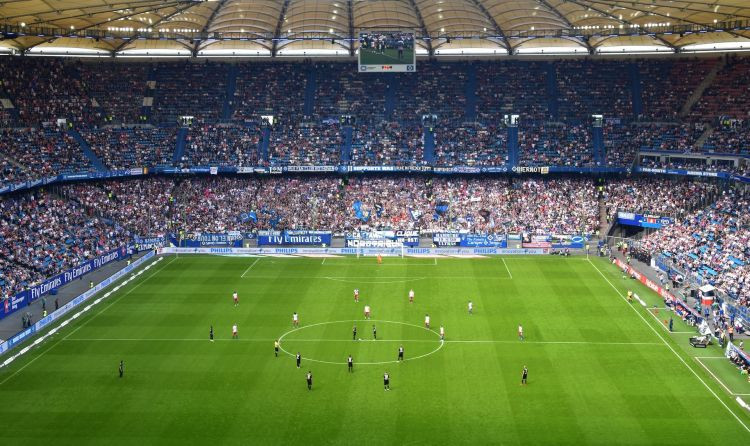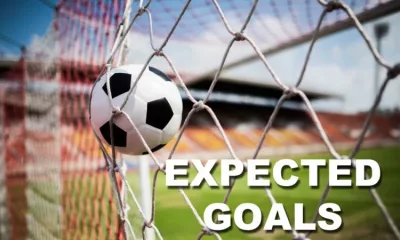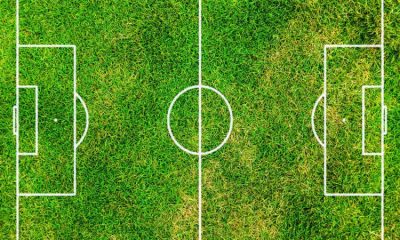
With millions of supporters worldwide, football is without a doubt the most popular sport in the world, and as some call it “the beautiful game”. After Covid-19 caused major interruptions to the sport, the latest major tournament was the long-awaited 2022 World Cup, which was delayed by a couple of years, and had more and more people becoming interested in football, which is nothing new. Modern football has seen some changes, but nothing major overall.

But, have you ever wondered about the technical and analytical side of football, though? Have you ever wondered how many football players actually are in a team?
In this article, we will address a key query concerning the sport in this blog post: What is the average size of a football team?
How many players play football on a team?
The football rules are as such: two teams play against each other. There are eleven players starting on the pitch for a football team, including the goalkeeper and 10 position players. 22 players from the two sides participate in the match overall.
There are three other fundamental roles in football in addition to one goalkeeper: defenders, midfielders, and forwards, also known as strikers. Depending on the team members and the playing formation and strategy, there are several other sub-positions. In the midfield position, there could be a centre midfielder, a defensive midfielder, and an offensive midfielder, for example.
There are also 5-a-side and 7-a-side games in non-professional football, but for official UEFA matches and events, both football teams must have 11 players.
On the pitch, there are three or four UEFA referees, and on the sidelines, the two head coaches and their assistant coaches, along with other members of both of the teams watch the game.
What Are The Key Player Positions And Roles?
Goalkeeper
The goalkeeper (GK) is essentially the final line of defence for a team. A goalie often stays in his own team’s penalty area, typically behind the goalpost, to guard against a potential goal. They are typically identifiable by a different colour jersey from the rest of the squad. Only goalkeepers on a football team are permitted to use their hands to capture or control the ball, and only while they are inside their own penalty area.
Goalkeepers are permitted to leave their individual penalty area, but once they do, they must follow the same regulations as other outfield players, which includes not using their hands.
Defenders
Defenders are often the members of the starting lineup whose main responsibility is to protect their goal from assaults from the opponent. Although modern football has changed, even the players in the back often play a significant role in their team’s build-up play to start the attacking plays.
In a football match, teams often use three to five defenders. The most popular football strategy now, though, is four at the back. According to their roles, defenders can be further classified into the following groups.
Center backs (CB) or centre defenders are positioned in the middle of the field, in front of their team’s goal. Teams often use two centre-backs in a four-defender system, whereas three center-backs are used in a three- or five-player backline.
Full backs, also known as side backs, are defenders who play on either side of their centre back. They are further classified as a left back (LB) or a right back (RB), depending on which side they operate in. Fullbacks frequently help offensively by storming up the field with overlapping runs to tire out the rival defence in addition to defending the team.
They are also known as wing backs if a team deploys three centre-backs and two aggressive full backs in the formation. Most full backs are speedy and have strong positioning skills.
Midfielders
Midfielders serve as the connection between the defence and the offence, as their name implies, and they are located in the middle of the football field. Additionally, midfielders play specialized duties, and their position changes depending on the formation.
Midfielders who occupy the centre of the field are referred to as central midfielders (CM). The team’s current game strategy mostly determines how many centre midfielders are needed. A central midfielder is referred to as a central defensive midfielder (CDM) if their primary defensive responsibility is to remain in front of their backline. The majority of players on the field that play solely as CDMs have a strong work rate and are skilled at interceptions and tackling.
Central attacking midfielders (CAM) are more offensively-oriented central midfielders who prioritize assisting the strikers in attack above defending. CAMs can typically play great last passes and shoot accurately from a distance.
Wingers are midfielders who play from the flanks right in front of the full backs. Depending on where they are on the field, they are referred to as left (LW) or right (RW) wingers. While they do assist their full backs in defence, a winger’s main responsibility is to attack and engage the defence of the other team.
In the past, wingers have stayed wide and sent crosses into the opponent’s box for their strikers to score. However, the idea of inverted wingers also exists in modern football. Players that frequently cut in from wide and shoot at goal or help a teammate from a more central position are known as inverted wingers. For inverted wingers, a left-footed player on the right flank or vice versa is optimal.
Wingers typically possess speed, strong dribbling skills, the ability to cross the ball effectively, and good shooting abilities.
Forwards
The team’s most skilled players on the field are called forwards or strikers, and their sole goal on the pitch is to score goals for the team. Therefore, all strikers have excellent positional awareness to open up space in the opponent’s box. Depending on how they play, they may also be talented, physically intimidating, or both.
A centre forward (CF) is a forward who plays more centrally and directly in front of the opponent’s goal. The majority of the time, centre forwards are physically dominating and have good head and shooting skills. They excel in keeping possession of the ball by avoiding pressure from opposing defenders so that their teammates may advance and assist the attack.
Instead of advancing toward the opponent’s box, center forwards may occasionally be told to drop deep to receive the ball and set up scoring opportunities for their teammates. The center forwards are also known as False 9s in certain situations. The False9 has only sometimes been used by well-known coaches like Pep Guardiola and Jose Mourinho in crucial match situations.
In the space between the wingers and the center forward, certain teams frequently place their forwards. Depending on which side they play from, these attackers are referred to as right forwards (RF) or left forwards (LF). Right strikers and left forwards are often quick on their feet and may drift out wide or cut back in to challenge the opposition’s backline.
What Is A Substitute Player, Captain, etc? What Is The Number of Football and Substitution Players?
In addition to the 11 starting players, there are a number of backup players on the bench who may be used as substitutes if necessary. FIFA has imposed a 5-substitute limit per team, with a sixth substitution permitted during overtime. A goalkeeper substitute must be at least one of the bench players.
The maximum number of substitutions per game is a total of three times. It excludes replacements made during extra time, at half-time, and at full-time. It’s OK to substitute twice or three times.
A team member is selected to serve as the team’s on-field captain; they are frequently one of the more senior or experienced players on the roster. Typically, the captain also leads the teams out of the locker room before the game. The captain often serves as the team’s focal point; if morale is low, the captain will be counted on to lift everyone’s spirits.
How Does Substitution Work In A Football Team?
Before the game begins, the players who sit on the sidelines as substitutes’ names must be told to the referee. Any substitute player who hasn’t been identified at this point will not be allowed to play. Unless a player is already off the field, a player who is currently on the pitch must get the referee’s approval before leaving the pitch, and leave by the nearest boundry line. A player who is being substituted by another is required to leave the pitch immediately without disrupting the game time.
What Is A Football “Formation”? The Different Types Explained
The most common formations used by football managers during a game are:
The widespread adoption of the 3-player defence in modern football has caused tactics to change. These days, 3-4-3, 3-5-2, and 3-4-2-1 are also often used, depending on the type of coaching a football coach applies. The formation usually changes depending on the team that the squad will be going up against.
Using a 5-player defence strategy (5-4-1 or 5-3-2) is a method which allows for fewer goals to be scored.
Can A Football Game Have Disciplinary Sanctions For A Number Of Players?
A football player can be suspended for the rest of the game if they are shown a direct red card or two yellow cards, followed by a red card in the same game. When a player is sent off the pitch, a substitute in his place is not permitted. For example, if a player is sent off for a foul or an intended mistake, his team will play the remainder of the game with just 10 players. In the event that such an event occurs during a game, teams typically change their strategies and formations.
FAQ’s
What Is Considered A Football Foul?
A football foul is often defined as an unfair action carried out by a player that interrupts play or causes injury/harm to a fellow player. The penalty is then decided upon by the match referee while enforcing the rules of the game.
There are several ways to penalise fouls in soccer. Depending on the offence, the referee may give a direct or indirect free-kick. In some instances, a foul in football results in the opposition side being given a penalty kick.
What Is Considered A “Direct” or “Indirect” Kick?
Direct kicks typically follow a contact foul or handball. The majority of other violations in football are indirect. A penalty kick is awarded whenever a defending team commits a contact foul or hand ball play inside their own penalty area, which is a box with markings at each end of the field.
What Does a Football Penalty Mean?
A penalty kick is a special type of direct free kick in FIFA Football. It happens in the course of regular play, not a shootout. The penalty mark, which is a location 12 yards (11 meters) from the goal line, is where a penalty kicker launches the ball.
How Can I Apply To Be A Referee?
You must be at least 14 years old and a resident of England to work as a referee for the Football Association (FA). For further information, get in touch with your county FA.
Where Are The Football Rules Made?
Football is governed by the Fédération Internationale de Football Association. In 1904, their initial headquarters were established in Switzerland. Over 200 people are now a part of them worldwide. Football in the English Premier League, which is played in the United Kingdom, is governed by FIFA.
How Much Time Can A GK Keep The Ball In His Hands?
Referees now have additional instructions as a result of the most recent amendments to the FIFA Football Rules. They can’t let the goalie advance more than four (4) steps when in possession of the ball. FIFA Law 12 in the codified FA regulations manages this rule.
What happens if the GK has the ball for longer than five or six seconds? The official can declare it to be time-wasting in that case. It usually results in an indirect free kick for the opposition.
Author


The Football Coach
How To Win Football Bets: A Betting Strategy To Help You Win Every Time

The Football Coach
How long is a football pitch? The complete pitch size guide











